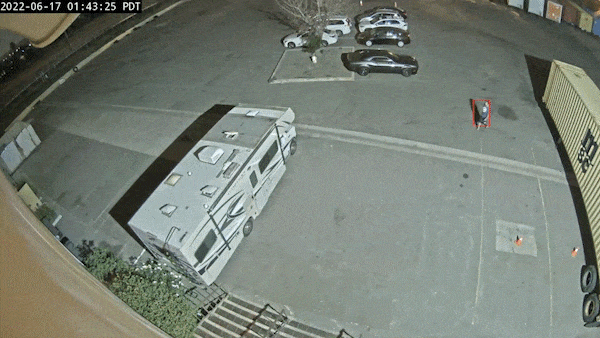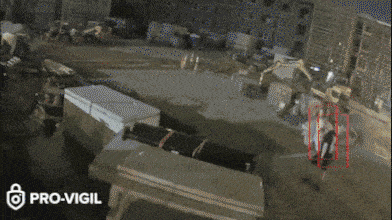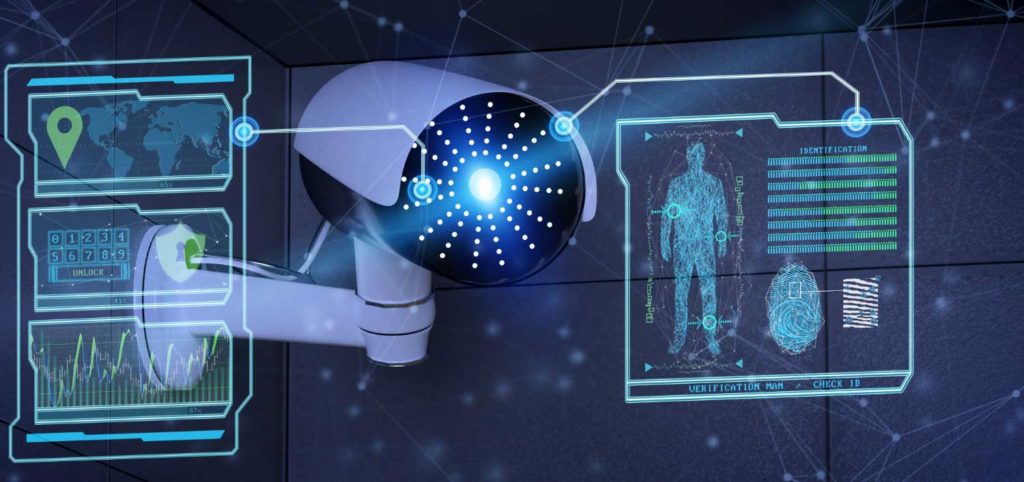Artificial intelligence (AI) means a lot of things. To some, it’s a Star Trek experience where you can talk to a computer and it talks back. To others, it’s a technology that enables the automation of repetitive jobs, opening the opportunity to do the same job with fewer people. To others still, it’s the ability to look at a massive amount of data and pull out the “needle in the haystack” – the trend or data piece that provides true insight.
Pro-Vigil falls in the latter camp – our AI doesn’t talk to you, but it is able to look at an endless stream of video and pinpoint when something is not right. This is valuable for security applications, because every camera is like having a guard on call at all times. And unlike humans, AI never gets tired or distracted, so it can watch video footage 24x7x365 to make sure everything is normal.

The Rise of Video Analytics
Video analytics has been around for a long time. It came into use with the rise of digital video at the turn of the century. At first its motion-detection abilities were relatively simple, identifying when something changed in the array of pixels. In the context of surveillance technology, it could tell if something was moving by observing changing pixels, but it had no way to know if the moving object was an intruder, an animal, or a tree branch blowing in the wind.
It also had no way to tell if the moving object was a criminal or not. It could only determine that something indeed was moving. Still, at the time, it was superior to analog video tape with no analytics. Both were primarily “record and store” technologies that could be accessed to review footage after-the-fact to provide evidence for legal or insurance claims. But they were not terribly useful for pro-active security – identifying malefactors before they have an opportunity to commit a crime.
Enter Modern Artificial Intelligence
Fast forward to today, and video analytics have been improved to become video AI, a “smarter” form of video analytics that actually enables proactive security. This is important because it is far preferable to detect and deter a would-be crime than it is to call authorities or prosecute a criminal after-the-fact — if they get caught at all. Pre-emptive security is the cheapest and safest form of crime prevention.

How does this happen? It occurs when a “virtual security guard” in a remote surveillance operations center gets an AI alert to look at a specific security feed. If the feed shows a criminal act may be underway, a protocol of procedures follows. This may include activating verbal and visual on-site deterrents to scare off the would-be criminals (think strobe lights and loud announcements or sirens), notifying the business owner or other authorized person, or in extreme cases calling the authorities to send police to intervene. All of this happens in a matter of seconds, dramatically increasing the likelihood that crime can be averted.
AI Must be Trained
One of the misconceptions with AI is that it is inherently effective – just deploy AI and your world gets better. This is incorrect though. AI must first be “trained” in order to work properly. In the context of physical security, it needs to “know” what is abnormal before it can become effective. Training involves letting the AI process thousands of hours of video data so it can understand what is normal and what is not, and what is criminal behavior and what is not. It also must be told some things by humans to make it more accurate – such as business hours, high-traffic times, location variances, areas that it shouldn’t watch, etc.
Pro-Vigil calls this process “Humanalytics™,” where AI is made smarter both through repetitive training and specialized information given to it. This is why it is very important for customers to collaborate with Pro-Vigil during the AI training process. Our customers know their environment better than anyone, and this information must be integrated into the AI training.
Once training is complete, AI understands the setting of the customer – is there a busy street out front and should it be prepared for many passers-by who are not criminals? Or is the customer located near the woods so the AI understands that the moving, breathing thing might be a deer or some other wildlife and not a human? Or does the business have a flag or wind-driven promotional vehicle out front that should be understood, so the motion does not result in a false-positive alert?
It all starts with the alert. This is the bugaboo of security. When an alert is valid – showing an actual problem, then the problem can be addressed. But all too often, alerts are “false positive,” so virtual security guards have to spend time verifying that the alert is about nothing before resuming their jobs. It’s easy to see how the false-positive alerts can lead to an enormous amount of wasted time. However, trained AI can radically reduce the number of false positives, thus reducing the amount of time required to chase down meaningless alerts.
It’s easy to see how AI enables physical security to evolve from its traditional reactive role to preventing crime from happening. But, effective AI is a collaborative process – if customers give Pro-Vigil the right information to fine tune the system, AI can reduce costs and, most importantly, speed the time it takes to respond to a security event. That’s a win for everyone.






